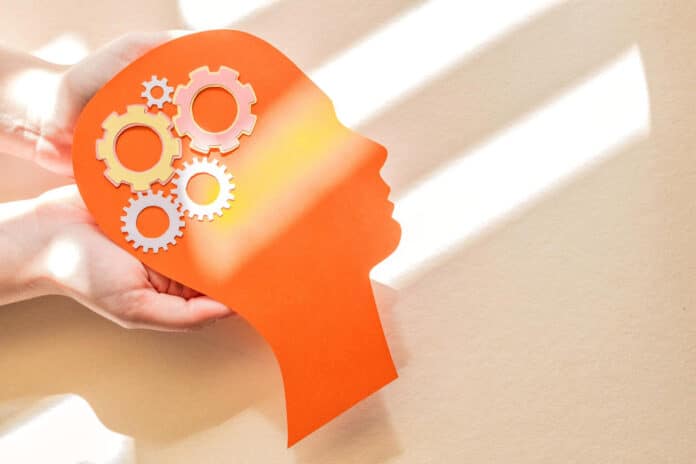Chronic anxiety is a serious global health issue, with a lifetime prevalence of more than 20% among adults, with a higher lifetime prevalence among women (23.4%) and adolescents (26%). However, molecular genetic understanding of anxiety and its link to stress has made little progress since the Hypothalamic-Pituitary-Adrenal axis was identified decades ago.
It’s healthy to feel a little anxious. Anxiety inspires, encourages, and pushes us to believe in ourselves. But when they experience a lot of anxiety, they become cognitively paralyzed, their hearts beat quicker, they perspire, and confusion comes in.
The researchers from The University of Utah made a mouse knockout in the Hoxb8 gene, which resulted in chronic anxiety and OCSD-like behavior in mice. This was surprising because Hox genes generally ensure that all of our body’s components are in the correct place.
The researchers discovered that microglia, rather than neurons caused chronic anxiety. They hypothesized that microglia also control neuronal pathways involved in anxiety and normal grooming behavior. Chronic anxiety and pathological overgrooming take over when microglia are faulty. During development, the Hoxb8 gene particularly marks a specific type of microglia known as Hoxb8 microglia.
Based on cell lineage tracing, it was thought that the yolk sac, which begins to develop at gestation day 7.5, was the sole source of microglia, which then migrated into the growing brain around embryonic day 9.5.
According to a new study, Runx1 could account for only 60% of mature microglia, leaving an opportunity for other microglial cell lineages. Their lab showed that there are at least two progenitor pools for microglia: canonical non-Hoxb8 microglia and Hoxb8 microglia that are also born in the yolk sac but a day later (E8.5), then migrate to the fetal liver and AGM (Aorta Gonad Mesonephros region), where they are amplified 16 and 280-fold, respectively, before they entered into the developing brain, starting at E12. even if not Hoxb8.
The researchers wanted a way to link Hoxb8 microglia to the neurons/neuronal circuits that control anxiety and grooming behaviors. Optogenetics, the selective use of light-triggered cation channels to stimulate microglia, was one prospective technology. Because microglia are not neurons and cannot generate action potentials, this may not appear to be a desirable choice for this purpose.
On the other hand, optogenetic activation of microglia should depolarize the membrane potential of the cells, causing the microglia to transmit messages to neighboring neurons and activate them.
Researchers have discussed how optogenetic stimulation of Hoxb8 microglia in various brain areas affects behavior. What behavioral effects are produced when non-Hoxb8 canonical microglia are stimulated in the same brain regions? Unfortunately, they are unable to conduct those investigations directly due to the lack of a genetic marker for non-Hoxb8 canonical microglia. They may contrast the outcomes with optogenetic stimulation of Hoxb8 microglia alone by optogenetically stimulating both microglia subpopulations.
The experiments were designed to see if there were no behavioral differences between activating both microglia populations and Hoxb8 microglia, indicating that non-Hoxb8 microglia do not participate in grooming or anxiety induction, or if activating both microglia populations resulted in higher grooming and anxiety levels than Hoxb8 activation, indicating that both microglial populations participate in these behaviors.
Optogenetic activation of Hoxb8 microglia in specific brain areas was highly effective. In live mice, optic cables were used to specifically stimulate Channelrhodopsin2 (ChR2) with blue laser light, eliciting anxiety, grooming, or both depending on where parts of the brain were activated.
The model demonstrated that optogenetic stimulation of Hoxb8 microglia causes neuronal activity (spiking activity) in neighboring neurons. Furthermore, in vivo optogenetic stimulation of Hoxb8 microglia causes c-fos upregulation in neighboring neurons.

The experimental results were unexpected, as there were no behavioral changes between activating both microglia populations and solely Hoxb8 microglia. Instead, optogenetic stimulation of both microglial subpopulations in the proper brain areas suppressed the behaviors resulting from Hoxb8 microglia stimulation alone.
These findings required a complete rethinking of how the two microglia populations interact to regulate grooming and anxiety.
In conclusion, the new study explains the occurrence of two microglia subpopulations in mice, providing direct proof that optogenetic stimulation of Hoxb8 microglia results in the activation of neuronal activity in neighboring neurons.
Both microglia populations become pharmacological targets for the treatment of persistent anxiety or OCSD. The researchers will continue to investigate the molecular mechanisms explaining how these two populations of microglia control regular grooming and anxiety behavior, as well as how mismanagement of these levels results in pathological behaviors, chronic anxiety, and OCSD-like behavior.
Journal Reference:
- Naveen Nagarajan, Mario R. Capecchi ,etal. Optogenetic stimulation of mouse Hoxb8 microglia in specific regions of the brain induces anxiety, grooming, or both. Molecular Psychiatry. DOI: 10.1038/s41380-023-02019-w
